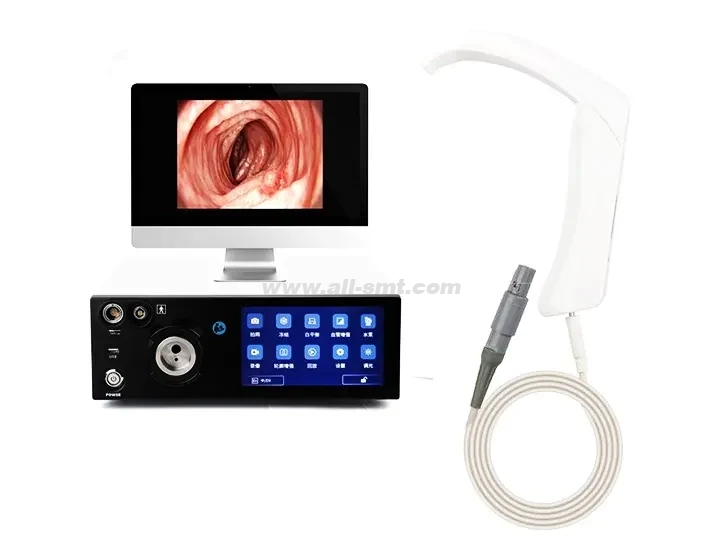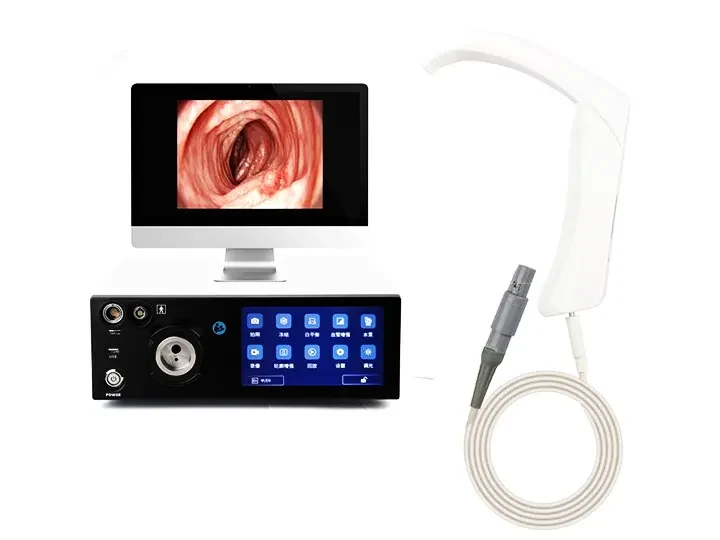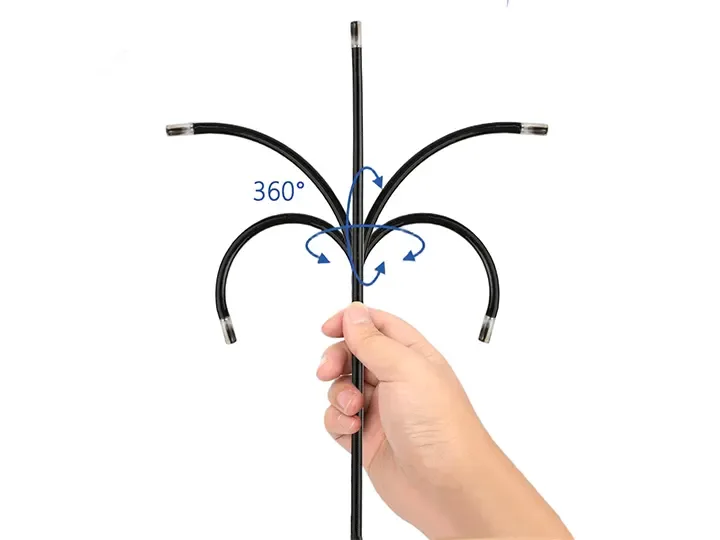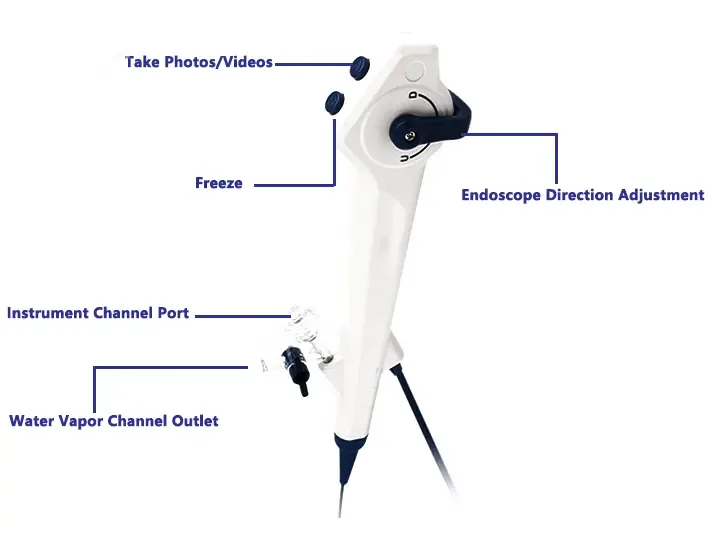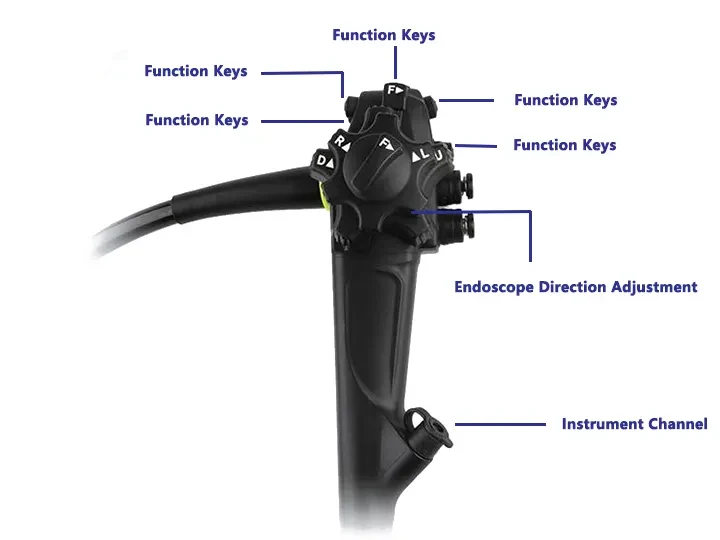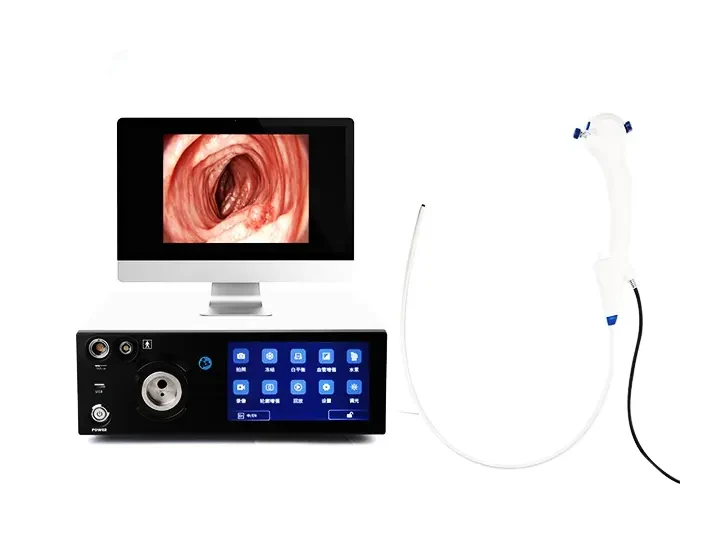In the field of medical equipment, attractive manufacturers of repetitive laryngoscope equipment usually have the following core characteristics, which can not only meet clinical needs, but also establish long-term advantages in market competition:
1. Technological leadership
High-precision imaging system
Provide 4K/8K ultra-high-definition image quality, support HDR and low-light environment imaging (such as Storz's IMAGE1 S 4K system)
Integrate NBI (narrow band imaging), AI real-time auxiliary diagnosis (such as automatic polyp marking)
Modular design
Upgradable hardware (such as light source, image processor) and software (such as algorithm update)
Compatible with a variety of mirror bodies (hard mirror/soft mirror) and treatment accessories (such as laser, electric knife)
Innovative sterilization technology
Support rapid low-temperature plasma sterilization (≤50 minutes to complete the whole process)
The mirror body adopts anti-corrosion coating (such as Olympus's anti-scratch coating technology)
2. Product reliability
Extremely long service life
The mirror body can withstand ≥500 high-temperature and high-pressure sterilization cycles (such as Pentax's ED-3490TK series)
Core components (such as optical fiber, CMOS) have a warranty of ≥5 years
Ergonomic optimization
Lightweight design (main unit ≤15kg), interface layout that conforms to the operating room's dynamic line
Touch screen + voice control interactive design (such as Medtronic's UE series)
3. Clinical adaptability
Full-scenario solution
Covering outpatient examinations (thin-diameter laryngoscopes), operating rooms (therapy mirrors with working channels), ICU (portable)
Support different specifications for children/adults (such as optional outer diameters of 2.8mm~5.5mm)
Treatment expansion capabilities
Integrated high-frequency electrosurgery and cryotherapy interfaces (such as ERBE's VIO system)
Compatible with precision instruments such as CO₂ lasers
4. Service and compliance advantages
Global compliance certification
FDA/CE/NMPA certified, ISO compliant 13485 quality management system
Provide special test reports such as EMC/electrical safety
Full life cycle service
Quick response (≤4 hours) by resident engineers, instant supply of spare parts
Digital management platform (number of uses tracking, automatic maintenance reminder)
5. Business model innovation
Flexible procurement plan
Leasing/installment payment options (especially suitable for grassroots hospitals)
Trade-in + technology discount policy
Academic support system
Establish training center (such as Karl Storz's LIVE training system)
Provide surgical video analysis and complication treatment database
6. Market verification case
Endorsement by leading hospitals
Clinical application cases of products in top institutions such as Mayo Clinic and Peking Union Medical College
Long-term follow-up data
Publish failure rate statistics for more than 5 years (such as ≤0.5% annual failure rate)
Benchmark manufacturer example
Manufacturer Representative technology/product Differentiation advantage
Olympus ENF-VT3 electronic laryngoscope 3.4mm ultra-fine diameter + NBI early cancer screening
Stryker 1488HD imaging system 4K+3D imaging, support for robotic surgery
Domestic (Mindray) HD-550 laryngoscope system 1/3 import price, AI real-time annotation
Fuji EB-1570K ultrasonic laryngoscope Ultrasound + optical integrated mirror body
Future attractive direction
AI deep integration: from diagnostic assistance to automatic generation of structured reports
Green sterilization: development of environmentally friendly cleaning and disinfection solutions (such as enzyme detergent recycling)
5G remote: support 4K live consultation + remote control (requires low-latency encoding technology)
Manufacturers with the above characteristics can not only solve clinical pain points, but also build a moat through technical barriers and service networks, and continue to gain favor from medical institutions in the laryngoscope equipment market.
